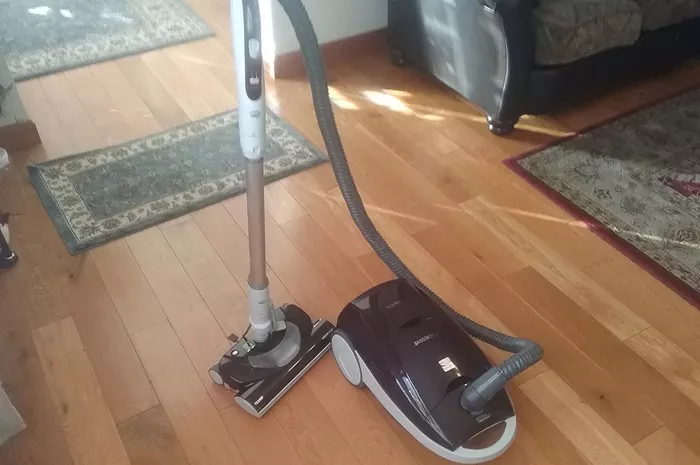Wet-dry vacuum cleaners are versatile machines that can handle both wet and dry messes. These cleaning machines are essential for various cleaning tasks, offering convenience and efficiency in both home and industrial settings. This article will delve into the key features, uses, pros, and cons of wet-dry vacuum cleaners, exploring their role in modern cleaning routines.
What is a Wet-Dry Vacuum Cleaner?
A wet-dry vacuum cleaner is a type of vacuum cleaner designed to clean both liquid spills and dry debris. Unlike traditional vacuum cleaners that are designed for dry debris only, wet-dry vacuums can handle liquids such as water, mud, and even small amounts of chemicals or oils. These machines are built to be more durable and flexible, making them suitable for a wide range of cleaning applications.
How Do Wet-Dry Vacuums Work?
Wet-dry vacuums operate using a motor that powers a fan to create suction. The design of these vacuums allows them to handle wet and dry materials by using different collection tanks. The dry debris is collected in a dust bag or canister, while liquids are stored in a separate tank that is equipped with special mechanisms to prevent leakage or clogging. Some models come with filters that help prevent the liquids from damaging the motor or other components.
Applications of Wet-Dry Vacuum Cleaners
Wet-dry vacuum cleaners are used in various environments, from homes to commercial spaces, thanks to their versatility. Below are some of the common vacuum cleaner uses where these machines excel.
Home Use
In homes, wet-dry vacuums are particularly useful for cleaning up liquid spills, such as water from a flooded area or spilled drinks. These vacuums can quickly restore order to messy situations without the need for multiple cleaning devices. Additionally, wet-dry vacuums are effective in cleaning hard-to-reach areas like garages, basements, and workshops.
Commercial and Industrial Use
In commercial and industrial settings, wet-dry vacuums are essential for maintaining cleanliness in large spaces. They can be used to clean up debris in warehouses, workshops, and even construction sites. They are also crucial for cleaning up liquids in places like kitchens, hospitals, and laboratories.
Automotive Cleaning
Another significant use of wet-dry vacuums is in the automotive industry. These vacuums are ideal for cleaning both the interior and exterior of vehicles, whether it’s to remove dry dirt from the carpet or clean up a spill on the floor mats. Their ability to handle both dry and wet messes makes them highly effective for car detailing.
Advantages of Wet-Dry Vacuum Cleaners
There are several vacuum cleaner pros that make wet-dry vacuum cleaners an attractive option for many users. Here are the key benefits:
1. Versatility
One of the primary advantages of wet-dry vacuum cleaners is their versatility. They can clean both wet and dry messes, eliminating the need for multiple cleaning devices. Whether you need to vacuum dry dust and debris or pick up water spills, these machines can handle it all.
2. Power and Efficiency
Wet-dry vacuums are typically more powerful than standard vacuum cleaners, making them highly efficient in cleaning up large amounts of debris. Their powerful suction can pick up heavy debris, including wet items, that traditional vacuums might struggle with.
3. Easy to Use
Most wet-dry vacuum cleaners are designed with user-friendly features. They are easy to maneuver and can be used by people of all ages. Many models come with wheels or handles for easy transport, making them ideal for both home and professional use.
Disadvantages of Wet-Dry Vacuum Cleaners
Despite their many advantages, wet-dry vacuum cleaners do have some limitations. Below are some vacuum cleaner cons to consider before purchasing one:
1. Bulkiness
Wet-dry vacuums tend to be bulkier than standard vacuum cleaners, which can make them less convenient for small spaces. Their size may also make them harder to store, especially in homes with limited storage options.
2. Maintenance
Due to their ability to handle both wet and dry materials, wet-dry vacuums require more maintenance. The tanks must be cleaned regularly to prevent the buildup of mold or bacteria. The filters also need to be maintained to ensure optimal suction power.
3. Noise
Wet-dry vacuums can be noisy, especially models designed for heavy-duty cleaning. The noise level may be a concern for people who are sensitive to loud sounds or for use in noise-sensitive environments.
Key Features to Look for in a Wet-Dry Vacuum Cleaner
When shopping for a wet-dry vacuum cleaner, several features can help you choose the best model for your needs. Here are some key features to consider:
1. Suction Power
The suction power is one of the most critical factors in a wet-dry vacuum cleaner. Higher suction power means better cleaning performance, especially for heavy debris and liquid spills. Look for models that offer adjustable suction settings for greater control.
2. Tank Capacity
The capacity of the tank determines how much debris and liquid the vacuum can hold. Larger tanks are ideal for commercial and industrial use, while smaller tanks are sufficient for household cleaning tasks.
3. Filtration System
A good filtration system is essential to prevent dust and debris from being released back into the air. Look for models with high-efficiency particulate air (HEPA) filters if you’re concerned about allergens or fine dust.
Conclusion
Wet-dry vacuum cleaners are powerful and versatile machines that can tackle a wide range of cleaning tasks. Whether you’re cleaning up a small spill at home or handling large messes in an industrial setting, these vacuums are designed to handle both wet and dry debris. By understanding their features, uses, pros, and cons, you can make an informed decision about whether a wet-dry vacuum cleaner is the right tool for your cleaning needs.
Related topic:
- How Does an Automatic Vacuum Cleaner Work?
- How Much Are Automatic Pool Cleaners?
- How Much to Rent a Wet Vacuum?

